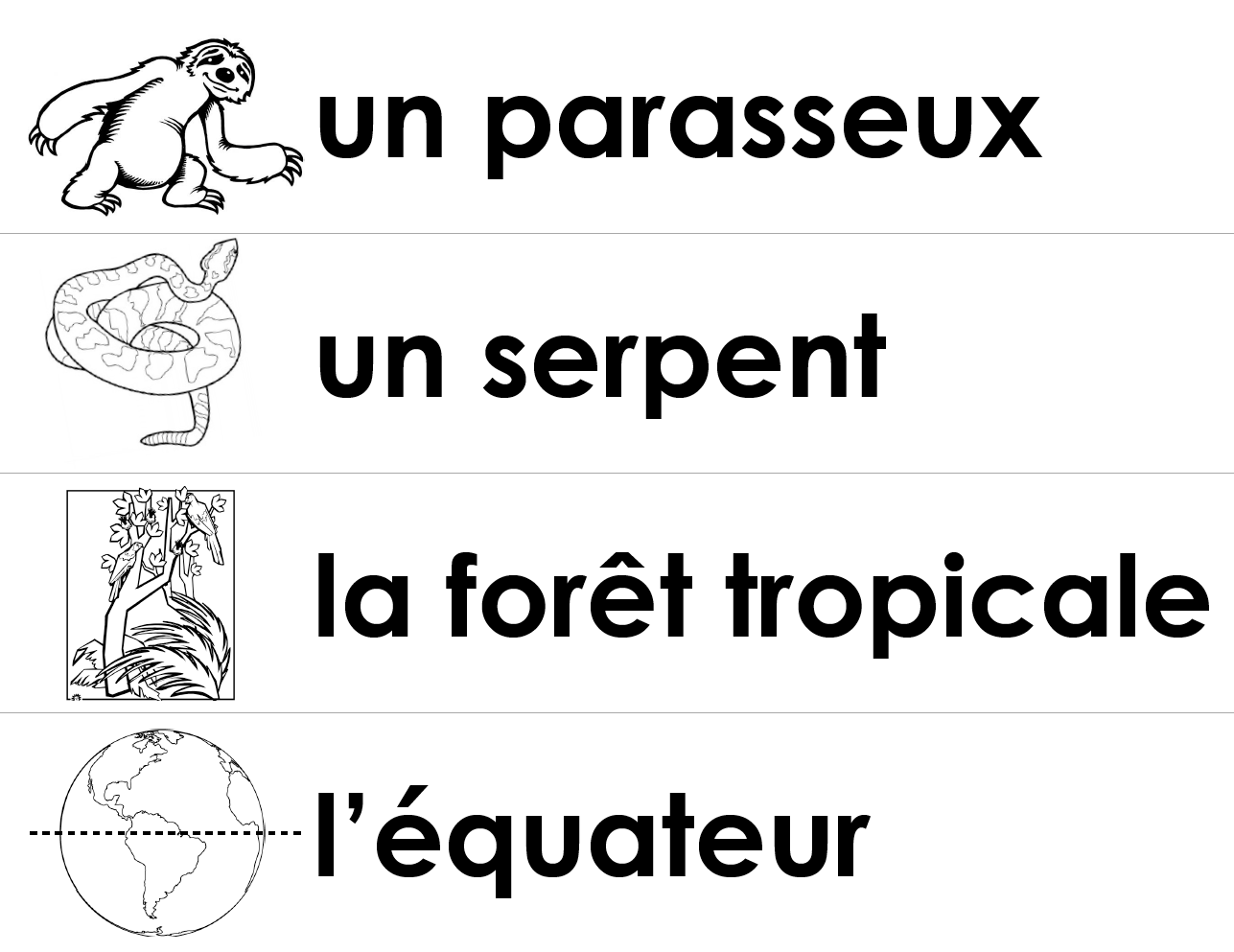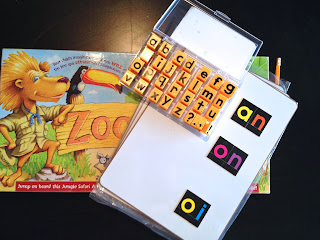So, your 5 or 6 or 7 year old is heading to (or will be heading to) French immersion for the first time and you want to help them at home? Where to start? Here are a few ideas.
1. Learn some french songs.
I'm going to suggest that you don't even have to translate them or tell your child, "Okay, now we're going to sing a song in French", just do it. When I have your child in class for the first time I sing everything, we sing a song to come to the carpet, to line up, to call out our class puppet, to clean up the toys. Initially the children just listen, enjoy the tune, and with some prompting and actions start to do what I do. With time they begin to understand some key words and may ask what the rest means. You can even start with some familiar English tunes using French words.
2. Colours, shapes, body parts, animals.
This vocabulary is what we start with in my class. Grab a visual dictionary (I have some
here and
here for you), type the words you don't know how to pronounce into a text-to-speech tool like google translate and you're ready. Again, I don't suggest telling your little one, "Now we're going to learn French" as you whip out your sheet. Keep it as authentic as possible. When getting dressed point to a colour on their clothing and proclaim, "C'est bleu." They might look at you quizzically, repeat blue, this is blue, c'est bleu. Do the same when you read books (even if they're in English), when you go on outings, or when you eat a snack.
3. Numbers
Brush up on your high school French and learn to count to at least 10. Count items as you tidy up, as you button up a shirt, as you eat a bowl of strawberries. Remember The Count from Sesame Street? Channel that guy. Oh, and once they've got that down count backwards, skip count by 2, or identify numbers out of order. Here's a little
song to help you out. You can find cards to print with the numbers
here. Have your child pick a number and make a set of that many (3 bey blades, legos, hair clips).
4. Make mistakes.
You've been calling an apple une banane, your child gets to school and you realize your error? Oh well. It's ok. You won't ruin them. Your interest in their education has already communicated the message to your little learner, I love you, I support you, I'll help you, I'm interested in you and I care about your learning. If their teacher has a conniption smile sweetly and silently forgive him/her in your heart. You're doing great.
5. Get a *new* puppet who only speaks and understands French.
(Kinda special, think elf on the shelf magic). We always have one in my classrooms. We've had a bunny called "Petit Lapin" and one year a puppy. The puppet can live in a fancy box or bag and to call him or her out you have to sing a little song; "Petit lapin, petit lapin, viens jouer." (Little rabbit, little rabbit, come out and play). We sing it softly, loudly, annoyingly, they love it. The puppet might want to point to things and get excited when you say the colour in French (my puppets don't talk but they react to what the children do and say). It might want to count things in your child's room or hear you sing a song and snuggle up to your child when they sing in French.
6. But I want to see them with a pencil in their hand!
Okay, sure, you can go there. Just remember that even in an actual classroom writing and letters and reading happens (or should happen) in an authentic way. A special journal or book for drawing about your day is a good place to start (begin with crayons or fat pencils). Ask your child to tell you about their picture. You can scribe what they say exactly in English (I love doing this, their words and stories are priceless) and then label a handful of items on the actual picture. Start in English and then look some up in French. Even if you don't name anything in French you are still modeling the writing process, maybe telling a little story and forming letters. Do they want to print? Super. Write out a word with a highlighter and have them trace it (better than dots). Not ready to print? Do not worry. It's okay, Colour, bead, roll snakes with playdough, pick up things with tweezers and strengthen those little fingers!
Your super star can already print their name and more? Awesome-sauce, give them a pencil, some letter cards or pictures of family members with their names on them. Wherever they are, go from there. Don't compare or stress or obsess (tough I know). I get to teach kindergarten and grade 1 and then often see my students again in grade 4 when I work as a guest teacher. I have seen first hand that kids speed ahead sometimes and linger in one spot at other times. They're not behind, they're lingering and will sprint ahead when they're ready. Let 'em linger.
éléphant, hibou, queue, alligator
I recently came across these
letters-of-the-alphabet crafts in French over at "Teaching Tricks Online". Cutting, pasting and following directions are valuable school skills as well. Glue each one in order into a scrapbook. When you come across more words (French and English) that begin with a certain letter, draw or print them on the right page. Glue in photos of family members and friends and write their names too (real world language is the goal). The previous links to printable words (# 2) with pictures will also have little books to make and read together. No one said you have to start with A and go in order to Z, learn the letters and sounds in their name, a friend's name, your city, keep it real.
7. Read.
Notice I didn't say read in French. Just read. Reading is key. If children learn to associate reading with comforting, close times, quiet moments with someone who loves them they will go back to reading for those same reasons (and more) time and time again. Reading teaches children to love learning, to increase their vocabulary, to begin to learn that words and books move left to right, and to begin to see that letters represent sounds and make meaning. If you need convincing check out this
video celebrating International Literacy Day that
Calgary Reads just put out. Brilliant.
8. Where's the technology?
Okay, really, do they need more screen time? I know all kinds of apps and games and videos but my goal here is to have you learning and interacting with your kiddo. Even in class I keep the screen time to a minimum. Yep, there are stories and games and tricks and videos but my hope is that you'll use those minimally. Check out
Sarah's Pinterest Board of French apps and books for a place to start.
Sylvia Duckworth is a Canadian teacher who does a thorough job of reviewing apps for students (and she's just all around awesome), check out her blog post
here.
What do you think teachers and parents? Do you have some creative and fun ways to support a kindergarten or grade 1 student new to French immersion?





























































